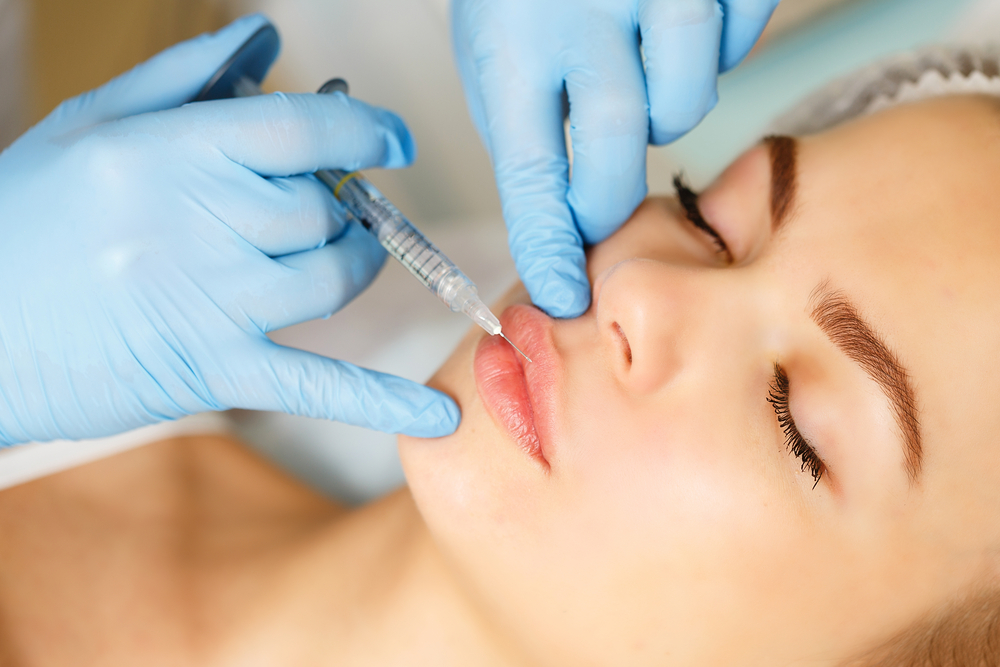- Bonti is a new biotechnology company that is developing products based on botulinum neurotoxin serotype E.
- These products have both cosmetic and therapeutic applications that may offer a wide range of benefits.
- Further clinical trials for these products are scheduled for the end of 2018.
Bonti’s innovation and potential as a company has attracted the attention of serious investors. At the start of 2018, the company successfully closed $15.5 million in Series C financing, bringing the total investment in the company to more than $36 million.
These funds will continue to support the development of EB-001, a unique botulinum neurotoxin with several significant advantages over conventional forms of treatments.
We spoke to Bonti CEO, Fauad Hasan to learn more about what’s in store for the future.
Introducing Bonti
“Bonti, based in Newport Beach, is a privately-held, innovative, clinical-stage, rapidly emerging biotechnology company founded by world class neurotoxin and biologics experts with proven prior success at Allergan,” says Hasan.
With fewer than 10 full-time employees, Bonti is as lean as they come in the biotech industry. A modestly-sized team enables the company to operate more efficiently and achieve key milestones quickly — without putting undue stress on capital.
“The team has deep neurotoxin, aesthetic, and pain expertise, which makes them uniquely qualified to develop treatment paradigms driven by a novel neurotoxin platform,” says Hasan. “By turning the science of neurotoxins into beneficial patient and healthcare provider solutions, Bonti seeks to improve lives by addressing key unmet needs in markets with significant addressable opportunities.”
Bonti’s current projects: A better Botox?
Two products currently in development at Bonti are EB-001T and EB-001A. Both are based on a naturally occurring biological molecule known as botulinum neurotoxin serotype E (BoNT/E).
How do these products differ from others that are similar on the market? Currently, the vast majority of botulinum neurotoxin products available to patients are derived from botulinum neurotoxin serotype A (BoNT/A), such as Botox. Although BoNT/A generally has a favorable safety profile — and many people are able to use these products without issue — BoNT/A does have its limitations.
For example, according to a study published in the Annals of Physical and Rehabilitation Medicine, BoNT/A-based products are associated with structural and mechanical muscle changes post-injection, which can lead to muscle atrophy.
As Hasan explains, BoNT/E functions in a similar way to BoNT/A in that they both block the release of acetylcholine at the neuromuscular junction, which temporarily inhibits muscle spasms and hyperactivity. The key points of difference is BoNT/E delivers faster results and is not as long-lasting as BoNT/A. This may facilitate recovery and prevent long-term muscle immobilization.
“EB-001 has a fast onset of action (within 24 hours) and a short duration of effect (about 2–4 weeks). Currently marketed BoNT/A products have an onset of action around 3–7 days, and a duration of effect of around 3–4 months,” says Hasan.
How will Bonti products be used?
As noted, Bonti products are believed to provide faster results than many other treatment options currently available, making them very valuable for procedures where time is an important factor.
“The unique target clinical profile of EB-001 is well suited for a vast range of therapeutic (EB-001T) and medical aesthetic (EB-001A) applications with currently unmet needs,” says Hasan. “Bonti’s unique platform includes additional next-generation neurotoxin drug product candidates that are targeted towards new applications.”
EB-001A is designed for use in aesthetic applications, while EB-001T will be better suited for therapeutic treatments.
The products are still in development (both EB-001T and EB-001A are undergoing phase 2 clinical trials) and are currently not available to the public. However, when they do reach the market, it is likely they will be used in a wide range of aesthetic and therapeutic treatments.
EB-001A: Aesthetic applications
Cosmetic treatments are increasingly popular in the United States and globally, as procedures become more safe, effective, and affordable. In 2017 alone, about 17.5 million minimally invasive cosmetic procedures were performed in the US, according to figures collated by the American Society of Plastic Surgeons. This represents an increase of 2% from 2016. Of these procedures, about 7.2 million involved the use of BoNT/A.
These figures suggest that EB-001A could see widespread use in the future. Bonti believes EB-001A may be used as an alternative stand-alone cosmetic product or as a complementary treatment to address some of the limitations associated with BoNT/A.
“In the aesthetic market, EB-001A may provide physicians with an innovative option to treat more patients,” explains Hasan. “It may be an ideal solution for scar reduction following surgical procedures, for unexpected or time-sensitive occasions, for introducing new patients to neurotoxin, and for mid-cycle touch-ups for fixing asymmetry resulting from BoNT/A treatments wearing off unevenly.”
Bonti has already carried out successful clinical trials showing EB-001A can be used to effectively treat moderate to severe glabellar frown lines (vertical lines between the eyebrows), with results lasting for up to 30 days. Further trials are expected to take place toward the end of 2018.
Bonti is also investigating the use of EB-001A for reducing postsurgical scarring associated with Mohs surgery, a procedure for treating some of the most common types of skin cancer.
EB-001T: Therapeutic applications
Parallel to the development of EB-001A, is EB-001T, a novel product formulated to treat focal muscle pain in the days and weeks following certain surgical procedures. This pain may also be the result of conditions such as sports hernias and muscle strain. All in all, Bonti estimates there are approximately 18 million cases of focal muscle pain annually in the United States.
Despite these numbers, there is no approved therapy for this condition. Instead, many doctors have taken to prescribing opioid-based prescription drugs, which are associated with a number of inherent risks.
In 2013, 37% of the 44,000 reported drug overdose deaths in the US were attributable to pharmaceutical opioids, as noted in a review published in The New England Journal of Medicine.
Hasan believes that EB-001T may offer a safe and effective alternative.
“In the therapeutic market, EB-001T is being developed for the effective treatment of focal muscle pain, a root cause of pain,” Hasan says. “It has the potential to improve outcomes and patient satisfaction while reducing opioid use and healthcare costs. EB-001T may have an opportunity to supplant opioid use as the standard of care and to replace other nonopioid pain relief products in multimodal pain management regimens for its millions of targeted postsurgical procedures and nonsurgical conditions.”
EB-001T is designed to deliver results within 24 hours, with effects lasting for approximately 14–28 days — significantly faster acting than BoNT/A products, which have an onset of action of around 3–7 days. Not only can it treat muscle pain, but it does so without interfering with the body’s central nervous system — as is common with opiods, muscle relaxants, and some other forms of muscle pain therapy — which may have a strong impact on addiction and overdose rates.
This could make it a good option for anyone looking for effective pain management treatment without the side effects associated with conventional prescription drugs.
As with EB-001A, EB-001T is still in the testing phase and is undergoing phase 2 clinical trials. Researchers are planning to evaluate EB-001T using mammoplasty and abdominoplasty models to gain a better understanding of the treatment’s efficacy and how it affects patients.
Looking to the future
There’s every reason for patients and physicians to be excited about Bonti’s future. Bonti plans to initiate the next round of clinical trials (Phase 2b) in the fourth quarter of 2018, which will give the company the data it needs to help make its vision a reality.
EB-001 has many potential applications and may prove to play a key role in cosmetic and therapeutic treatments in the years ahead.









